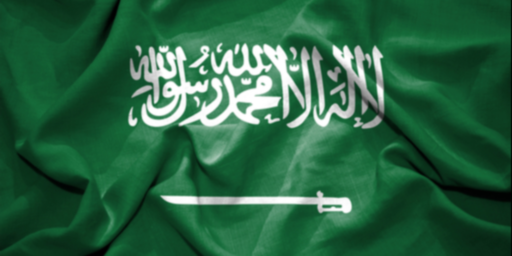The Iraqi Army: A Year of Progress
The Defense Department has put up an animated graphic entitled “The Iraqi Army: A Year of Progress.” It shows the number of provinces with Iraqis in the lead growing from January through December 2006 in time-lapse mode.
There’s also this description:
The goal of U.S. security strategy in Iraq is to develop the Iraqis’ capacity to secure their country while carrying out a campaign to defeat the terrorists and neutralize the insurgency.
1. Coalition Forces Continue To Transfer Responsibility For Security In Provinces To Iraqis. On December 20, responsibility for maintaining the security of An Najaf Province in southern Iraq was officially transferred to Iraqi authorities. It is the third (of eighteen) Iraqi provinces where security control is now principally in the hands of Iraqis, with Coalition forces standing ready to provide assistance if needed. Iraqi authorities assumed responsibility for security in Al Muthanna Province on July 14, 2006, and Dhi Qar Province on September 21, 2006. (See included maps). Several other provinces are close to meeting the criteria necessary for security independence.
2. Iraqi Forces Are Increasingly In The Lead. In June 2004, no Iraqi Army units were in the lead, capable of coordinating, planning and executing security operations independent of coalition forces in their own areas of responsibility. By September 2005, eleven Iraqi battalions participated in Operation Restoring Rights in Tal Afar, controlling their own battle space, and outnumbering Coalition forces for the first time in a major offensive operation. As of December 2006, 92 Iraqi Army battalions were in the lead in more than half of Iraq’s territory, with Coalition forces providing assistance in certain key roles such as logistical support. As shown in the included maps, the growth of the Iraqi Army in 2006 has been significant.
3. Iraqi Forces Continue To Grow In Number. In September 2004, there were only 96,000 trained and equipped Iraqi Security Forces. By November 2005, there were more than 212,000. As of December 2006 there are approximately 323,000 trained and equipped Iraqi Security Forces.
As noted in by the National Strategy for Victory in Iraq: “These indicators have more strategic significance than the metrics that the terrorists and insurgents want the world to use as a measure of progress or failure: number of bombings.”
Having the Iraqis in charge of security is, obviously, our goal. Unless they actually manage to clamp down on armed militias running around killing and terrorizing people, though, I’m not sure that this is a meaningful metric.



You are making a false distinction here. The “Iraqis in charge of security” ARE THE SAME AS “armed militias.”
They are not going to “clamp down” on themselves!
Ah Triumph, you’re missing the brilliance of Bush’s new plan – In the vein of “set a thief to catch a thief”, Bush is now empowering the militias to police themselves!
And with the completely-successful record of allowing US corporations to police themselves without undue gov’t interference, this will also stimulate the Iraqi economy! He is truly the Winston Churchill of our times.
Or not.
I think the bigger question is whether this Iraqi army will be capable of preventing Iraq from becoming a vassal state of Iran.